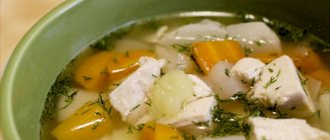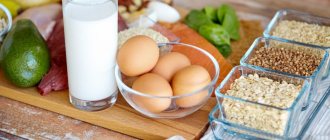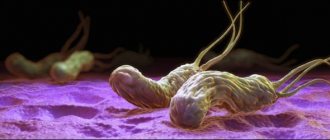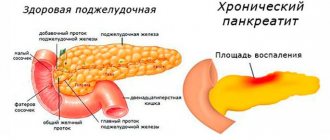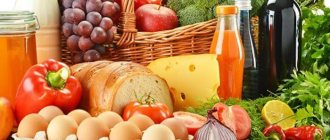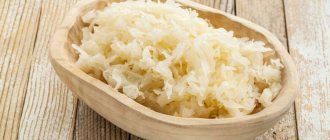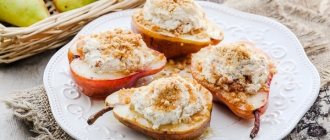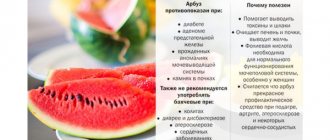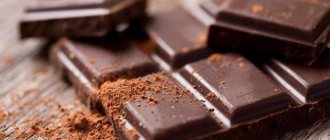Sea kale or brown seaweed kelp is highly valued by residents of coastal countries for its beneficial properties.
Laminaria grows in all seas. But only 3 of its species have the most valuable commercial value: saccharina, japonica, digitalata. Sea kale can be found on sale most often in pickled form, less often frozen and dried. Seafood you prefer to eat
- I can eat all day 64%, 610 votes
610 votes 64%610 votes - 64% of all votes
- For dinner 24%, 227 votes
227 votes 24%
227 votes - 24% of all votes
- For lunch 11%, 101 votes
101 votes 11%
101 votes - 11% of all votes
- For breakfast 2%, 21 votes
21 votes 2%
21 votes - 2% of all votes
Total votes: 959
18.04.2020
- I can eat all day 64%, 610 votes
610 votes 64%610 votes - 64% of all votes
- For dinner 24%, 227 votes
227 votes 24%
227 votes - 24% of all votes
- For lunch 11%, 101 votes
101 votes 11%
101 votes - 11% of all votes
- For breakfast 2%, 21 votes
21 votes 2%
21 votes - 2% of all votes
Total votes: 959
18.04.2020
×
You or from your IP have already voted.
Beneficial features
The greatest value for the human body is fresh or dried kelp obtained in cold northern waters. Interestingly, seaweed grows throughout its life (11-18 years) in places with a constant current and can reach up to 20 m in length.
Eastern countries have long used this product in various forms. Based on it, soups are cooked, sweets, pastilles, sauces and salads are prepared. Seaweed is pickled, frozen, dried, fried and consumed fresh. This is a unique source of fiber, proteins, polysaccharides, phytosterols, vitamins A, potassium, calcium, sulfur, phosphorus, magnesium, sodium, iron, iodine, boron, bromine.
Medicinal properties of seaweed:
- Neutralizes radionuclides, removes heavy metal salts and toxins, reduces the risk of cancer. Laminaria owes these properties to biologically active substances – alginates. They are used in the food industry under codes E400-E404, E406, E421 in the manufacture of ice cream, bread, creams, jelly, and jam. Thus, “E” is not always preservatives, sometimes they are simply components of seaweed that have a beneficial effect on the human body.
- Normalizes intestinal function, has a mild laxative effect, and is indicated for use for chronic constipation. Laminaria swells in the stomach, which causes a reflex increase in intestinal motility.
- Facilitates the process of losing weight and normalizes metabolism.
Sea kale is a low-calorie product (10-25 kcal/100 g), which, when ingested in the stomach, dulls the feeling of hunger for 2-3 hours. As a result, weight loss is much easier [1].
- Replenishes iodine deficiency in the body, thereby normalizing the function of the thyroid gland. Treats Basedow's disease, endemic goiter and hyperthyroidism [2].
Interestingly, in the Far East, dry kelp is added to dough for baking bread, based on the calculation of 0.4 mg of powder per 1 kg of flour.
In addition, sea ginseng replenishes iron reserves in the body, eliminating signs of anemia.
- Removes harmful cholesterol, participates in hematopoiesis, regulates blood pressure, improves memory.
- Strengthens the immune system, nourishes the brain.
- Normalizes the menstrual cycle, hormonal levels in women, increases the chances of conception. In addition, it is a powerful aphrodisiac that stimulates sperm activity and viability in men and prevents erectile dysfunction.
Laminaria is a preventative against gynecological diseases in women (trichomonas colpitis, inflammation of the appendages and uterus)
- Improves skin condition, removes the appearance of cellulite and stretch marks (when used externally in the form of masks and wraps).
- Calms the central nervous system, increases the body’s performance, and relieves prolonged stress [3].
Sea kale is a natural restorative and restorative remedy, recommended for use by people after intense mental and physical stress, or severe illnesses. The product has immunostimulating, antisclerotic, detoxifying and laxative effects.
Indications for use: loss of strength, depression, fatigue, thyroid disease, vitamin deficiency, anemia, obesity, high cholesterol, constipation, hormonal imbalance in women, sexual weakness in men, blood diseases, arthritis, rheumatism, rhinitis, sinusitis, bronchitis , pneumonia, prostate adenoma.
Interestingly, with regular consumption of seaweed, the likelihood of developing breast cancer in women is reduced by 60%.
Brown kelp contains fucoidan, which has blood thinning properties. It is used in water procedures to eliminate rheumatism, cellulite and obesity.
Is it possible to eat sauerkraut if you have stomach and duodenal ulcers?
Doctors recommend including cabbage of different varieties in the diet of patients. It is unique in its action, it can speed up recovery, but also provoke an exacerbation.
Cabbage for stomach ulcers helps heal wounds and reduce inflammation. The juice has medicinal properties. It is fiber-free and high in S-methylmethionine. Sauerkraut for gastritis increases acidity, relieves inflammation, and improves the functioning of the organ.
When you can and cannot eat cabbage if you have a stomach ulcer
Is it possible to eat sauerkraut if you have a stomach ulcer?
Experts say that sauerkraut for stomach ulcers should be included in the diet and eaten every day during the period of remission. It contains vitamin U, better known as S-methylmethionine, with powerful effects:
- Antibacterial.
- Anti-inflammatory.
- Wound healing.
- Antitumor.
The disadvantage of all types of cabbage is its high fiber content. This is beneficial for a healthy body. But if the disease affects the organs of the gastrointestinal tract - the gastrointestinal tract, then coarse fiber irritates the inflamed mucous membrane and provokes an exacerbation.
Juice squeezed from fresh and sauerkraut contains all useful substances except fiber. It is used during treatment as an adjuvant. Studies have shown that when drinking half a glass of the drink 3 times a day, the patient recovers faster. For gastritis with low acidity, press sauerkraut. To treat stomach ulcers, use the juice of fresh white cabbage leaves.
Attention! During the initial period of exacerbation of the disease, cabbage and juice should not be consumed. You can start drinking juice and include sauerkraut in your diet with your doctor’s permission. An individual diet is selected for each patient.
Stomach disease occurs for various reasons. When prescribing a diet, the characteristics of the patient’s body are also taken into account. The doctor decides on a case-by-case basis what to treat and what foods to eat.
Juice accelerates healing, relieves inflammation
Sauerkraut for gastritis and duodenal ulcers
Sauerkraut juice is used in folk medicine to treat stomach problems and poor appetite. It should be borne in mind that it not only heals wounds, relieves inflammation and improves motor skills. Juice may cause gas and acidity. Cabbage is a unique vegetable. Pickled it contains more vitamins than fresh. The juice contains a whole range of microelements:
- Magnesium.
- Iron.
- Zinc.
- Fluorine.
- Phosphorus.
- Calcium.
- Iodine.
They are all necessary for tissue repair. Vitamin U is an irreplaceable element. It is not produced by internal organs and can only be obtained through food. To obtain juice, sauerkraut is placed in a colander, crushed, squeezed and mixed with the drained brine. Fresh leaves are cut into small pieces and also ground in a meat grinder. To obtain 1 liter of drink, you will need approximately 2 kg of leaves. It is imperative to remove the stalk, as nitrates and other harmful substances collect in it. The top dried and damaged leaves are removed.
The resulting drink is heated in a steam bath to 60 degrees, this increases its usefulness. You should drink it warm, about 30 - 35 degrees, before eating. The dosage and duration of administration are determined by the doctor. For the purpose of prevention, juice is consumed 300 - 400 ml 3 times a day for a month.
White cabbage dishes for stomach diseases
White cabbage casserole
The fiber in fresh cabbage injures a sore stomach. For ulcers and gastritis, it should be processed. You can ferment, stew, boil, bake. During the period of remission, it is advisable to eat the vegetable every day as a side dish for meat and potatoes. You can add cabbage to porridges, increasing their value and diversifying your diet. When fermented, lactic acid is formed in cabbage. It participates in the processes of decomposition and formation of glucose, fills the body with energy, and restores strength. Lactic acid strengthens the muscles of all internal organs, including the stomach.
As you recover, you can add peeled zucchini, pumpkin, apples, cherries, mushrooms, green onions and other products to the vegetable. Eating new dishes with meat and fish should be done on fasting days, returning to foods from a gentle diet. Cabbage casseroles with mushrooms, apples, cottage cheese contain a large amount of useful substances, activate the stomach and restore strength. It is better not to use salt if possible. The fried crust formed on top should be removed - it is rough and can damage the mucous membrane.
Cauliflower and broccoli
Cauliflower for stomach ulcers
In cauliflower, the fiber is softer and easier to process. The protein content of various compounds is higher. It inhibits the development of cancer cells, is an antioxidant, a strong antitumor agent, and is used in the prevention of cancer, including the gastrointestinal tract. The inflorescences can be stewed on their own or with other vegetables, fish and meat.
Broccoli is a type of cauliflower, has a soft structure, and is high in vitamins P and B. It is especially useful for older people. Restores the functioning of the stomach and intestines, heals wounds and relieves inflammation.
Broccoli is softer and contains less fiber. You can make salads from it. For those suffering from stomach ulcers, raw vegetables are contraindicated, only boiled or stewed. In addition to regular products, broccoli can be cooked with cottage cheese, cheese, and cream. When baking, pour in the egg beaten with milk and butter.
Peking and seaweed for stomach ulcers
Sea kale for gastritis
Chinese cabbage is soft and is usually used fresh for making salads. It is healthy, contains the entire list of microelements and vitamins, including U, soft fiber. If the disease worsens, Chinese cabbage should be excluded from the diet. As the body recovers, it can be stewed or added to soup. Fresh cabbage is consumed only when health is fully restored. Juice is used as an adjunct to drug treatment. The dosage and duration of the course are prescribed by the doctor.
Seaweed is named for its similar taste and is cut into the same thin noodles as white cabbage. It contains a lot of iodine and zinc. The plant promotes rapid healing of wounds and restores immunity. During remission, kelp is added in powder form to various dishes. When the stomach disease worsens, it increases acidity. When the plant grows under water, it absorbs sea salt; it should be excluded from the list of products during an exacerbation of the disease. The peculiarity of kelp is swelling and poor digestion, injury to the walls, and the creation of a feeling of heaviness.
Chemical composition
After kelp is extracted from the depths of the sea, it is subjected to heat treatment and drying, since it consists of more than 85% water. However, these manipulations do not deprive it of its nutritional value. Despite the partial loss of moisture, vitamins and mineral compounds in seaweed are completely preserved.
The chemical composition of the product directly depends on the illumination, water temperature and sea salinity.
The calorie content of fresh seaweed is minimal and amounts to 10-25 kcal per 100 g.
The composition of polysaccharides is dominated by pectins - alginates (75% of the daily value of 100 g) and only a small amount is made up of starch and sucrose (less than 0.5%) [4].
100 g of product contains 88 g of water, 3 g of carbohydrates, 2.5 g of organic acids, 0.9 g of proteins, 0.6 g of dietary fiber and 0.2 g of fats [5].
Laminaria is capable of accumulating toxic compounds: strontium, arsenic and cadmium.
Table No. 1 “Chemical composition of seaweed” [6]
| Name | Concentration in 100 grams, milligrams |
| Vitamins | |
| Choline (B4) | 12,8 |
| Ascorbic acid (C) | 10,0 |
| Alpha tocopherol (E) | 0,87 |
| Niacin (B3) | 0,64 |
| Beta carotene (A) | 0,336 |
| Riboflavin (B2) | 0,32 |
| Thiamine (B1) | 0,21 |
| Folic acid (B9) | 0,18 |
| Phylloquinone (K) | 0,066 |
| Pyridoxine (B6) | 0,01 |
| Ergocalciferol (D) | 0,0024 |
| Macronutrients | |
| Chlorine | 1056,0 |
| Sodium | 312,0 |
| Calcium | 220,0 |
| Potassium | 171,3 |
| Sulfur | 134,0 |
| Magnesium | 126,0 |
| Silicon | 51,0 |
| Phosphorus | 42,0 |
| Microelements | |
| Bromine | 10,0 |
| Iodine | 3,60 |
| Iron | 3,30 |
| Zinc | 1,23 |
| Bor | 0,4 |
| Manganese | 0,2 |
| Vanadium | 0,16 |
| Copper | 0,13 |
| Cobalt | 0,015 |
The characteristic features of seaweed are its slimy consistency, hard structure and pungent iodine odor.
Sugary and Japanese kelp, which have the best taste, are often on sale. They have a soft consistency and are used in cooking in any form: dried, fresh, canned, stewed, dried and frozen. Algae is added to soups, salads, purees, stews, casseroles, borscht, pickles, cabbage soup, zrazy and cutlets. It gives a characteristic piquancy to the dish. In addition, dry seaweed is ground into powder and used as a seasoning.
Finger-dissected, curly, narrow and northern kelp are considered medicinal and technical raw materials. It is used in folk medicine, cosmetology and dietetics to maintain health, lose weight, prolong youth and beauty of the body.
How to choose canned cabbage?
Pay attention to her birthplace! If the plant that packaged cabbage is located on the coast of the White and Barents Seas, you need to take: the product contains the maximum amount of useful substances. Laminaria contains substances that inhibit the growth of bacteria, so it does not need additional preservatives. So, apart from the seaweed itself, and maybe vegetable oil and simple spices, there should be nothing else in the canned food. “Proper” seaweed crunches like real seaweed, but is easy to chew. If there is a soft mess or coarse fibers in the jar, it means that the seaweed was prepared in violation of the technology or even spoiled.
Be careful, kelp
First of all, the potential harm of a seemingly so useful product is due to its growing environment. Algae is capable of absorbing substances from the environment. In environmentally polluted areas, seawater may contain traces of radioactive elements, oil and heavy metals. During the growth process, kelp absorbs these substances that pose a danger to human health and causes intoxication of the body, which neutralizes its beneficial properties [7].
Marine ginseng, grown artificially, has a high iodine content, and therefore poses a danger to people with hyperthyroidism.
Contraindications:
- diseases of the digestive system in the acute phase;
- high sensitivity to iodides;
- tendency to food allergies;
- age up to 3 years;
- disruption of the endocrine system;
- hemorrhagic diathesis;
- kidney disease;
- acne, furunculosis.
Caution should be exercised by nursing and pregnant women so as not to cause pathology in the fetus. Laminaria is oversaturated with iodine, which, penetrating the placenta, in excessive quantities can lead to abnormal development of the child.
How to use
Dry seaweed is used as a seasoning for baked fish and first courses. It enhances their taste and gives food characteristic marine notes. In addition, dry kelp can be consumed fresh, boiled. To do this, the algae is pre-soaked in water for 12 hours. During this time, it swells and becomes suitable for consumption. In this form, seaweed is added to salads.
Currently, kelp sheets are becoming increasingly popular, used for preparing Japanese dishes - sushi.
Today, there are more than 300 culinary recipes using this medicinal plant to maintain good health and vitaminize the body.
Seaweed goes well with many foods: rice, pasta, cheese, meat, fish, mushrooms and vegetables. This is a universal raw material for the production of original desserts (sweet pies, jam) and snack cakes. Kelp is fried with potatoes, dried, pickled and served with any dish: cereals, vegetables, meat or fish.
When enjoying a seafood delicacy, you should follow the norm, which is 100 g of product per day. This amount is sufficient to cover the body's need for iodine and pantothenic acid. The latter, in turn, stimulates the adrenal glands, which are responsible for the production of adrenaline. This means that there will be no trace of apathy, blues and depression.
Let's look at the most popular recipes with seaweed.
"Japanese rolls"
Ingredients:
- kelp sheets – 3 pcs;
- sushi rice – 175 g;
- sugar – 15 g;
- salt – 2.5 g;
- rice vinegar – 20 ml;
- water – 250 ml;
- cucumber – 1 piece;
- avocado – 1 piece;
- Philadelphia cheese – 100 g;
- lightly salted salmon fillet – 100 g;
- soy sauce;
- wasabi;
- pickled ginger.
Cooking principle:
- Rinse the rice under running water 5 times. Fill it with 250 ml of water and leave for 20 minutes. When the grains swell, you can start cooking. Place the rice in a thick-bottomed saucepan over low heat, cook until the water is absorbed (about 15 minutes), but do not open the lid often. After the water has boiled, turn off the heat, remove the container from the hot stove, cover and leave to simmer for 15 minutes.
- Prepare seasoning for rice. To do this, sugar, salt, and vinegar are mixed, slightly heated until the spice crystals dissolve, and added to the porridge. The rice should absorb the dressing and cool slightly.
- Prepare the filling. Peel the cucumber and avocado and, together with the fish, cut into slices along the length of the kelp sheets. When the filling is ready, start preparing the rolls.
- The makisu (sushi mat) is covered with cling film, on top of which a kelp sheet is placed. To prevent the rolls from being dry, the seaweed is lightly soaked in dressing. Then rice is spread over the surface of the kelp in a thin layer, 3 cm away from one edge. Slices of cucumber, avocado, fish are distributed on top and soft cheese is laid out in a strip.
- Using a mat, carefully roll the sausage and cut it into 6-8 pieces with a sharp knife dipped in water.
Ready rolls are served with pickled ginger, wasabi and soy sauce.
"Sea kale salad Mermaid"
Ingredients:
- canned cabbage – 100 g;
- wine vinegar – 15 ml;
- crab sticks – 200 g;
- vegetable oil – 50 ml;
- fresh seaweed – 200 g;
- squid – 100 g;
- French mustard – 15 ml;
- Korean carrots – 100 g;
- pepper mixture;
- salt.
Cooking method:
- Seaweed is used in salads both fresh and boiled. In the second case, the seaweed is dipped in boiling water, cooked for 15 minutes, then drained in a colander and washed under running water.
- The raw squid carcass is first peeled and then boiled for 3 minutes depending on its size. Cool and cut into strips the thickness of Korean carrots.
- Chop the crab sticks coarsely.
- Prepare a dressing from a freshly ground mixture of peppers, French mustard, wine vinegar, salt and olive oil. Whisk all ingredients.
- Mix Korean carrots, seaweed, squid, canned corn and crab sticks.
Before serving, place the salad on a serving plate and pour the dressing on top without stirring.
What can and cannot be eaten with gastritis of the stomach: list of products
General recommendations on diet for gastritis of the stomach
When developing a dietary menu, the acidity of the gastric juice of a patient with gastritis should be taken into account, since food products have different effects on the secretion and motility of the stomach. But there are general diet rules that are valid for gastritis of any type:
- full breakfast;
- observing breaks between meals (3 – 4 hours);
- regularity and fractionation of meals (5 – 6 meals a day, in small portions);
- the interval between dinner and bedtime (at least 3 hours);
- thorough chewing;
- drinking drinks no earlier than half an hour after eating;
- refusal of dry food and food on the go;
- exclusion of spicy, fatty, fried, smoked foods;
- limiting the consumption of sugar and sweet foods, fresh bread (especially warm);
- giving up coffee and carbonated drinks;
- using only fresh and high-quality products.
It is better to avoid chocolate altogether if you have gastritis. Drinking alcohol and smoking are also strictly contraindicated. It is worth giving up even such light drinks as beer and dry wine, especially with hyperacid gastritis. It is advisable to eat food at the same time. You should switch to a new diet gradually.
What not to eat if you have gastritis
A diet for gastritis with high secretion of hydrochloric acid involves avoiding foods that have a strong effect on the secretion and motility of the stomach. Its task is to reduce the production of gastric juice. To do this you should exclude:
- food with coarse fiber (bran bread, turnips, radishes, rutabaga, radish, sorrel, spinach, tough and stringy meat, pearl barley, millet, peas, beans and other legumes, dried fruits, nuts and seeds);
- food that stimulates the secretion of hydrochloric acid and increases the acidity of gastric juice (cabbage, citrus fruits, unsweetened fruits and berries, concentrated broths of meat, fish and mushrooms, pickles, canned food, baked goods, spices and seasonings, fermented milk products, fatty and salted fish, raw onions and garlic);
- too cold or hot food.
With low acidity, the task of the dietary menu is to stimulate the production of gastric juice and limit the mechanical effect of food on the gastric mucosa. Before eating, it is useful to provoke the production of gastric juice by watching advertisements or videos about delicious food, or simply by talking and using the power of imagination.
Forbidden foods for hypoacid gastritis
- Rough food. Barley, millet, beans and peas can be consumed only in very limited quantities. It is better to exclude cabbage, mushrooms, turnips, radishes, cucumbers and peppers completely.
- Fatty and stringy meat, canned food.
- Grainy and thick-skinned berries (raspberries, strawberries, red and white currants, gooseberries).
- Highly salted and spicy cheeses.
- Lard and animal fats (not digested due to the low concentration of acid in the gastric juice).
- Spicy food, grape juice.
What can you eat if you have gastritis?
What foods can be consumed for gastritis by patients with high acidity of gastric juice:
- Floury. Eating bread for gastritis is not prohibited; it is important to decide which bread will not be harmful. Rye bread causes fermentation, so it is better to include wheat bread, day-old or dried, crackers, and lean cookies in the menu.
- Porridge. It is advisable to cook cereals in water, but it is acceptable with a small addition of milk. Oatmeal, buckwheat and rice are recommended for consumption.
- Vegetables. Carrots, boiled potatoes, beets, cauliflower in the form of puree or pureed soup. Ripe, non-acidic tomatoes without peel are acceptable in small quantities.
- You can eat fruits, but in limited quantities. It is acceptable to eat bananas, pears, sour berries, and baked apples. It is preferable to consume fruits in the form of purees or compotes.
- Among the spices, it is permissible to add dill, parsley, cinnamon and vanillin to dishes in small quantities.
- Eggs. You can eat no more than one egg per day in the form of a steamed protein omelet, “in a bag” or soft-boiled.
- Dairy products. Milk is acceptable in small quantities, preferably low-fat. It is better to use it as an additive to tea. Low-fat cottage cheese will help prevent heartburn. You can include a little cream or low-fat sour cream in the menu.
- Butter and vegetable oil can be consumed in limited quantities.
- Meat. Only dietary varieties: low-fat lamb, poultry (chicken or turkey), boiled rabbit. It is recommended to remove skin and tendons from the meat and chop finely before eating.
- Fish. Preference should be given to low-fat fish such as pollock and cod. It is recommended to steam it, whole or in the form of cutlets.
- Seafood. In limited quantities.
- Sweet. Limited consumption of marshmallows, marshmallows, and milk cream is acceptable. In small quantities, honey is useful for patients with gastritis, especially if consumed in the form of an aqueous solution 1 - 2 hours before meals.
- Beverages. It is recommended to consume drinks that do not have a significant effect on the secretory function of the stomach. This is weak tea with milk, jelly, alkaline mineral water without carbon, fruit juice. A patient with gastritis will benefit from natural juices from cabbage, potatoes and carrots. Not only are they an excellent source of vitamins and microelements, but they also prevent the development of stomach ulcers. You can also drink other non-acidic juices. Juices that are too sweet are consumed diluted. Rosehip decoction has a healing effect and improves appetite.
For gastritis with low acidity, you should eat foods that stimulate the production of gastric juice and improve appetite, which usually suffers with this diagnosis. List of recommended products:
- Floury. Day-old wheat bread.
- Porridge. Oatmeal, buckwheat and semolina cooked exclusively in water are recommended.
- Vegetables. Zucchini, boiled potatoes, cauliflower and white cabbage, pumpkin - in the form of puree, pureed soup or steamed.
- Fruits. Watermelon, peeled grapes, and baked apples are allowed for consumption.
- Sweet. “Honey water” is recommended for consumption 1 – 2 hours before meals. Has a beneficial effect on the condition of the gastric mucosa and appetite.
- Eggs. No more than two per day in the form of a steam omelet, “in a bag” or soft-boiled.
- Dairy products. Milk is acceptable as an additive to tea. You need to eat fermented milk products (kefir, natural yogurt, etc.), mild cheese.
- Fish. Marine fish species are preferred. To improve appetite, a little salted herring is acceptable.
- Oils. Vegetable oils and butter are allowed in moderation.
- Meat. You can include veal, beef and poultry (chicken or turkey) cleaned of skin and tendons in your diet menu. It is recommended to consume the meat steamed or in the form of broth, with the addition of cereals or pasta.
- Beverages. Weak tea with lemon or a little milk, weak coffee, cocoa. Rosehip decoction, cabbage, carrot, and potato juices will be useful for the gastric mucosa and good appetite. Drinks should be consumed before meals or, in extreme cases, no earlier than half an hour after meals.
Is it possible to fast if you have gastritis?
Some doctors practice methods of treating gastritis using fasting. Such techniques can have a positive effect with proper alternation of fasting and a strict diet. But you should not fast without consulting a doctor, in order to avoid worsening the condition of the gastric mucosa, especially during the phase of exacerbation of the disease. Compliance with a therapeutic diet is the key to success in curing gastritis. Completely avoiding junk food and including recommended products in the menu will help relieve unpleasant symptoms of the disease and prevent exacerbation of gastritis.
Laminaria for the body
Sea kale is a healing product extracted from the depths of the sea and is a storehouse of vital vitamins, macro- and microelements. It is used to prepare medicinal baths and wraps aimed at normalizing metabolism, eliminating excess fluid, cleansing the body and eliminating dermatological problems.
For weight loss, kelp is used internally and externally. In the first case, it is introduced into the diet in capsule or tablet form. Preparations based on algae extract normalize metabolism and thyroid function, which have a direct effect on a person’s weight [8].
Effects from external use in the form of wraps, masks, baths:
- improves skin tone;
- improves the external condition of the epidermis (gives smoothness);
- relieves swelling;
- reduces sagging dermis (has a slight lifting effect);
- accelerates metabolism in skin cells;
- reduces the appearance of cellulite;
- cleanses the dermis of toxins and waste;
- prevents the appearance and helps eliminate stretch marks [9].
There are the following forms of kelp release: dietary supplement, thallus and powder.
Tablets with algae extract are intended for weight loss, prevention of vitamin deficiency and removal from the body of accumulated harmful substances that slow down the process of losing extra pounds during diet therapy.
Seaweed thallus is used for cold, hot and contrast wraps to solve dermatological problems and get rid of cellulite.
Dried kelp powder is suitable for making masks for the body and face. Their main purpose is nutrition and rejuvenation.
Body baths
Baths are used to increase blood flow, smooth cellulite, eliminate inflammatory rashes and remove all dead particles from the surface of the skin, relieving tension [10]. It is recommended to take similar procedures with seaweed for 2 months. To extract maximum benefits for the body, the body is first washed with a scrub or a hard washcloth and only after that the procedure is carried out. The bath is filled with water, 150 g of kelp powder is dissolved in it. The procedure is carried out on an empty stomach. Its duration is 20 minutes. The ideal time is an hour before bedtime.
Contraindications for taking baths: cardiovascular diseases, skin wounds, pregnancy, menstruation in women.
After finishing the procedure, the skin does not need to be dried with a towel. Let it absorb the kelp-enriched water and dry naturally.
Body wraps
The main purpose of the procedure is to improve the condition of the skin (increasing the elasticity of the dermis, giving it a smooth and radiant appearance, eliminating cellulite and stretch marks) [10]. Laminaria wraps activate biochemical processes and increase blood circulation in fatty tissues. As a result, the skin on problem areas (buttocks, abdomen, thighs, waist) is smoothed and tightened. Before performing the procedure, the skin is cleansed with a scrub.
Instructions for use:
- Kelp powder (160 g) is dissolved in 5 liters of hot water (60 degrees). This amount is sufficient to treat the entire body. The paste is thoroughly stirred for 2 minutes until a homogeneous consistency is obtained.
- For active weight loss, a warm kelp composition is applied to problem areas 20 minutes after preparation.
If the main purpose of the procedure is to vitaminize the epidermis or increase skin tone, the paste is pre-cooled for 1 hour, and only then distributed over the body.
- After applying the product to the skin, wrap the areas in cling film and leave for 50 minutes, then rinse with water. The dermis is not wiped with a towel.
The frequency of procedures is every 1-2 days. Duration of the course is 2 months. To speed up results, kelp wraps are combined with physical activity and diet. Only with an integrated approach can the desired result be achieved.
"Sea" masks
Algae products are used to eliminate acne, oily shine, dryness, irritation and flaking of the skin, smooth out wrinkles and old scars, narrow pores, lighten freckles and age spots. Laminaria masks nourish, tone, moisturize and rejuvenate the dermis, have an anti-inflammatory and anti-stress effect, and correct the facial contour. Cosmetologists recommend using them to care for aging, fading and sagging skin. In addition, there are special recipes aimed at combating increased oiliness and excessive dryness of the dermis.
For cosmetic purposes, use dry brown algae or dried kelp, which are sold in pharmacies. In any case, they must be ground into powder.
The base for the masks is prepared in the same way. Dry crushed seaweed (15 g) should be poured with warm water (100 ml) and left until it swells and softens (15 minutes). After this, the paste is immediately applied to the cleansed face or mixed with additional ingredients.
Remember, sea ginseng gives long-lasting cosmetic results, so the procedure should not be repeated more than 1-2 times a week.
Contraindications for use:
- extensive inflammation on the face (seaweed improves blood circulation in the local area of application and can accelerate the spread of infection);
- skin rash;
- allergy to iodine;
- rosacea (will make the vascular network even more noticeable);
- pregnancy and lactation.
Kelp has slippery leaves, so masks based on it are best applied to the face while lying down. Ingredients should be selected based on the needs and type of dermis.
Recipes for masks with sea ginseng:
- Clay based. Increases skin elasticity, tightens pores, improves blood circulation in the epidermis, helps get rid of blackheads.
Ingredients: blue clay – 5 g, dry seaweed – 5 g, warm boiled water – 5 ml. Preparation principle: mix the remaining ingredients with the swollen seaweed until a homogeneous mass is obtained. Apply the paste to your face for 15 minutes, rinse with water without using cosmetics.
To care for problem skin prone to inflammation, an additional ingredient is added to the composition - the pulp of a fresh aloe leaf - 5 g.
- Honey-oil composition. Used to smooth out wrinkles. It has a gentle effect even on sensitive dermis. It is a universal product for caring for any skin type, regardless of age.
The fruit sugars contained in honey retain moisture in the cells, preventing the dermis from drying out. In addition, this excellent antiseptic promotes wound healing and has a pronounced anti-inflammatory effect.
The oil nourishes the skin, relieves it from dryness, tightness and flaking. This is a natural source of polyunsaturated fatty acids and tocopherol, which prolong the youth of the epidermis and inhibit the aging process.
Mask ingredients: flower honey – 5 ml, seaweed powder – 5 g, olive oil – 3 drops. The principle of preparing, applying and removing the composition from the face is similar to that described in the first paragraph.
- Gelatinous. Contains collagen, which penetrates the skin and stops age-related changes in it, removes wrinkles. As a result, the complexion improves and its contour is tightened, blackheads disappear, the dermis is rejuvenated, and the functioning of the sebaceous glands is normalized. The mask is used to care for aging oily skin.
Best materials of the month
- Coronaviruses: SARS-CoV-2 (COVID-19)
- Antibiotics for the prevention and treatment of COVID-19: how effective are they?
- The most common "office" diseases
- Does vodka kill coronavirus?
- How to stay alive on our roads?
Ingredients: food gelatin – 5 g, dried seaweed – 5 g, herbal decoction – 50 ml. You can use milk, fresh fruit or vegetable juice as a base for the mask.
Method of preparation: add gelatin to a warm herbal decoction, leave it to swell, and then heat it in a water bath. When the composition becomes liquid, add the prepared swollen kelp and remove from heat. Apply a warm mask to your face and wait until it hardens. During the procedure, facial movements should be avoided. Rinse off the frozen product with warm water.
Thus, seaweed masks tighten, soothe the skin, relieve inflammation, stress and fatigue. This is a universal beauty product that is suitable for caring for dry, oily, combination, sensitive, problematic and aging dermis.
Contraindications for eating seaweed
Unfortunately, in any food product, an excess of some substances leads to a reduced content of others. There are no plants that could be called a panacea for all diseases and pathologies. This statement is also true for kelp, which, alas, also has a number of contraindications and side effects.
In particular, this product should be excluded from the diet:
- during pregnancy/lactation (excess iodine can harm the fetus/child);
- for severe renal pathologies;
- for some gastrointestinal disorders;
- in case of individual intolerance (allergy) to iodine or other components of seaweed.
